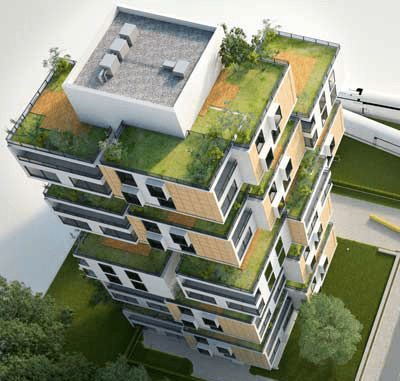Sayali Andhare
Dr. B. N. College of Architecture, Pune, India
Namrata Dhamankar
Dr. B. N. College of Architecture, Pune, India
Corresponding Author: namrata.dhamankar@bnca.ac.in
Cite this article
Andhare, S., Dhamankar, N., A (2024). Wholistic Housing Solution for Onsite Construction Workers. In Proceedings of Energise 2023- Lifestyle, Energy Efficiency, and Climate Action, pp 01–07, Alliance for an Energy Efficient Economy. https://doi.org/10.62576/BLLC4387
Highlights
- Modular System for onsite construction housing, designed as DIY kit.
- Wall paneling system designed for thermal insulation.
- Use of eco cooler
- Design and prototyping focusing on affordability, scalability, and adaptability.
Abstract
Construction workers are among our cities’ most important service providers, but their contribution to the urban economy is frequently overlooked. Most construction workers are migrants, and the primary reason for their migration is to find good job opportunities along with an improved standard of living. The big question is whether this migration and growth of the infrastructure industry benefits the migrant workers’ standard of living. The primary goal of the research has been to design and test a prototype housing system for onsite construction workers for indoor environmental quality. It presents a part of the ongoing research examining the parameters that influence the onsite housing system for construction workers in terms of building materials, services provided, and indoor environmental comfort. Simulation studies were carried out using Design Builder software to assess the annual performance, operational energy use, and indoor thermal comfort condition of the Business-as-usual case and the proposed design case. The EPI for the Business-as-Usual Case is 31 kWh/m2, while the EPI for the Design Case is 19 kWh/m2. To put the idea to the test, an actual prototype of a construction worker housing system was created and tested for thermal performance and user experience, along with onsite installation and long-term viability. The primary findings of the study are that onsite workers living in modular prefabricated housing can achieve indoor environmental comfort by using a wall paneling system made of paper honeycomb board sandwiched between powder-coated G.I. sheet can provide thermal comfort with additional aluminum bubble wrap insulation for the roof. Lower U values for the wall assembly and the use of Eco coolers, a passive cooling system, have increased thermal comfort and ventilation, respectively. The research also evaluated the affordability, scalability, and adaptability of the suggested prototype for a holistic housing system. The current study’s objective is to assess how well the created unit performs in Pune or another city with a comparable climate.
Keywords
Onsite Construction Workers Housing, Thermal Comfort, Modular Construction, Eco Coolers, Data Loggers
References
- S. N., Roy, and M. Naik, “Evaluating the walfare framework for building and other construction workers in India”. Research Gate, 2017.
- India, G. O. The Building and Other Construction Workers Act, 1996.
- R. Srivastava, and R. Sutradhar, “Migrating out of poverty? A study of migrant construction sector workers in India”. New Delhi: Institute for Human Development, 2016.
- J. Khan, T. Hussain, M. T. Javed, and S. Meraj, “Effect of indoor environmental quality on human comfort and performance: A review. In: Muzammil, M., Khan, A.A., Hasan, F. (eds) Ergonomics for Improved Productivity. HWWE 2021. Design Science and Innovation. Springer, Singapore, 2022. https://doi.org/10.1007/978-981-16-2229-8_39
- R. Bardhan, and R. Debnath, “Evaluating building material based thermal comfort of a typical. Materials Today, vol. 5 pp. 311-317, 2018. https://doi.org/10.1016/j.matpr.2017.11.087
- F. A. Mustafa, “Performance assessment of buildings via post-occupancy evaluation: A case study of the building of the architecture and software engineering departments in Salahaddin University-Erbil, Iraq. Frontiers of Architectural Research, vol. 6 pp. 412-429, 2017. https://doi.org/10.1016/j.foar.2017.06.004
- S. Purkayastha, “An eco-friendly DIY air cooler which runs without electricity, 2016. Retrieved from www.thequint.com: https://www.thequint.com/news/environment/an-eco-friendly-diy-air-cooler-which-runswithout-electricity
- Loomcraftsprefab, “Why India Needs More Offsite Modular Homes?”, 2020. Retrieved from Loom Crafts: https://www.loomcraftsprefab.com/post/why-india-needs-more-offsite-modular-homes

 Bishal Thapa
Bishal Thapa





 Fred Sherman
Fred Sherman Sumedha Malaviya
Sumedha Malaviya Satish Kumar
Satish Kumar












 The three main global energy concerns of providing access to modern energy, enhancing the security of the energy supply, and minimising the impact of energy systems on the climate have an impact on both national and international energy governance. To develop solutions that address the many facets of these difficulties, however, a variety of actors and stakeholders must be included due to the complexity of the energy challenges.
The three main global energy concerns of providing access to modern energy, enhancing the security of the energy supply, and minimising the impact of energy systems on the climate have an impact on both national and international energy governance. To develop solutions that address the many facets of these difficulties, however, a variety of actors and stakeholders must be included due to the complexity of the energy challenges. Cities are responsible for more than 70% of the world’s energy consumption and 40% to 50% of its greenhouse gas emissions. Managing increasing urbanisation is a challenge, and nations must deal with the effects it will have on the environment in terms of energy and climate.
Cities are responsible for more than 70% of the world’s energy consumption and 40% to 50% of its greenhouse gas emissions. Managing increasing urbanisation is a challenge, and nations must deal with the effects it will have on the environment in terms of energy and climate. Our transition to a future with lower carbon emissions depends heavily on buildings. They are our places of residence, rest, and employment; they also account for around one-third of the world’s greenhouse gas emissions and nearly 40% of the world’s energy usage.
Our transition to a future with lower carbon emissions depends heavily on buildings. They are our places of residence, rest, and employment; they also account for around one-third of the world’s greenhouse gas emissions and nearly 40% of the world’s energy usage.